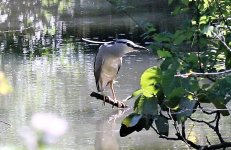One would think that a large part of the population here spends an inordinate amount of time looking at its own feet.
LOL, no not feet. To address your puzzlement about the use of close focus, here are a few subjects I have close-focused on in recent visits to the west of Scotland.
Hermit Crabs and Brittlestars on a shore covered in slippery rocks making walking or even just standing still a tricky business.
Observing the tiny wild orchid Bog Orchid Hammarbya paludosa without treading near or amongst them and potentially squashing the soft boggy ground and any orchids that had not yet emerged above ground level.
Checking out dense ground-layer vegetation for the presence of caterpillars of Marsh Fritillary butterfly, avoiding disturbing the vegetation by walking amongst it.
Enjoying close-up views of Marsh Fritillary butterflies, Aeshna juncea and Cordulegaster boltonii dragonflies, and later in the year, the huge variety of fungi on Islay in the southern Hebrides.
Checking whether a vast swarm of Butterfly Orchids were the Greater or Lesser variety, again reducing the trampling of the habitat and in the same place, observing a male Adder. And by the way they were Lesser Butterfly Orchids.
Standing in shallow sea-water on a sandy bed and watching a shoal of Sandeels swimming close to my feet. Watching them disappear into the sand when I moved and then watching them slowly emerge when I remained motionless for a minute or two.
If you have ever seen a nature programme on the tv in which the camera zooms in to show a close-up of a bee on a flower and your reaction was 'wow', well this kind of view is what you can get with close-focusing binoculars.
Some years ago it was common to read on Birdforum, complaints that it was a shame bino users were having close-focus capability imposed on them by the demands of specialists. At the time I refuted this by pointing out that it was the birders who were only interested in birds who were the specialists and that making binoculars more versatile with a good close-focus capability catered for those with a broader interest in nature.
Lee












